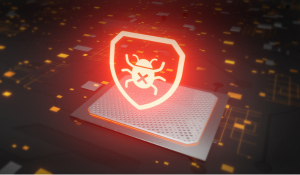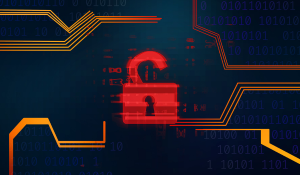Indicators of Compromise (IoCs): The early warning signs of a cyber attack
Cyber threats are evolving rapidly. For organizations in healthcare, manufacturing and critical infrastructure, it is crucial to remain vigilant....
4 min read
 DriveLock
Aug 21, 2025 9:45:00 AM
DriveLock
Aug 21, 2025 9:45:00 AM

In the dynamic world of IT security, a reactive approach is no longer sufficient. Relying solely on cleaning up after a breach leaves your organization vulnerable and can lead to significant operational and financial damage. To truly protect your critical infrastructure, it's essential to get ahead of the threat. This requires a shift in focus from what has happened to what is happening right now—a move from identifying the aftermath of an attack to spotting the early warning signs.
| TABLE OF CONTENTS |
While many security strategies focus on identifying a breach after it has occurred, a more proactive approach is essential. This is where Indicators of Attack (IoA) come into play, shifting the focus from post-breach cleanup to pre-breach prevention.
An Indicator of Attack is a piece of evidence that reveals an attacker's intent and methods before they achieve their objective, such as compromising a system or exfiltrating data. Unlike traditional indicators, which are often tied to specific file hashes or ip-addresses—clues left behind after a breach—IoAs are behavioral clues. They represent the sequence of actions an attacker takes to move through a network, whether that's performing reconnaissance, exploiting a vulnerability, or escalating privileges. By detecting these actions in real-time, organizations can interrupt the attack chain before a compromise occurs.
IoAs are not a single event but a pattern of malicious behaviors. These can be categorized into several key types. A threat actor's initial actions often involve gaining intelligence on a network, which is visible through unusual scanning or probing activity.
IoAs are not a single event but a pattern of malicious behaviors. These can be categorized into several key types:
Reconnaissance Activity: Attackers often begin by gathering information about their target. IoAs at this stage might include unusual network scanning, attempts to enumerate user accounts, or web scraping of public-facing assets.
Privilege Escalation: Once an attacker gains a foothold, they often try to elevate their access rights. IoAs for this could be a user account attempting to run a command it shouldn't, or a service account trying to access sensitive system files.
Lateral Movement: After compromising an initial system, attackers try to move to other machines on the network. This could be identified by a user logging into a machine they've never accessed before or by unusual remote access attempts using protocols like User Datagram Protocol (UDP) or RDP.
Data Staging: Before exfiltrating data, attackers often collect and compress it in a staging area. IoAs can be detected as large file transfers to an unusual location or the creation of suspicious archive files.
Understanding the distinction between IoAs and indicators of compromise (IoC) is crucial for building a resilient security posture. While both are critical components of a security strategy, they serve different purposes.
|
Feature |
Indicators of Attack (IoA) |
Indicators of Compromise (IoC) |
|
Timing |
Pre-compromise |
Post-compromise |
|
Focus |
Attacker intent and behavior |
Evidence of a successful breach |
|
Goal |
Stop the attack in progress |
Identify and mitigate damage |
|
Nature |
Dynamic and behavioral |
Static and forensic |
|
Examples |
A user account trying to access a restricted server. |
A known malicious file hash. |
An IoA helps you catch an intruder while they're still in the process of breaking in. On the other side, IoC helps you clean up and rebuild after they've already ransacked the place.
For organizations in critical sectors, the proactive nature of IoAs is invaluable. By focusing on the attacker's tactics, techniques, and procedures (TTPs), IoAs provide an early warning system that can prevent a minor incident from becoming a major data breach. This approach is central to modern threat intelligence, which uses an understanding of IoAs to predict and prepare for attacks. Incorporating IoAs into your security operations enables you to:
Reduce Dwell Time: The time an attacker spends undetected inside a network is a key metric for cybersecurity teams. By spotting IoAs, you can dramatically shorten this period.
Improve Response: IoAs provide actionable intelligence that allows security teams to respond immediately to stop an attack, rather than reacting to the aftermath of a breach.
Strengthen Overall Defense: Focusing on IoAs moves your security strategy beyond simple perimeter defenses to a more dynamic, behavior-based approach that can adapt to sophisticated threats.
Identifying subtle, interconnected IoAs in a sea of network traffic can be a monumental task for human analysts. This is where Artificial Intelligence (AI) and Machine Learning (ML) play a transformative role. AI-powered security tools can:
Analyze Massive Datasets: AI can rapidly process vast quantities of data—including network logs and user behavior—to identify patterns that are indicative of an attack but would be invisible to the human eye.
Establish a Baseline of Normal Behavior: By learning what "normal" activity looks like for a specific network, AI can flag any deviations as potential IoAs with a high degree of accuracy.
Predict Future Threats: Combining an understanding of IoAs with threat intelligence, AI can not only identify current attacks but also predict potential future attack vectors based on observed TTPs.
The integration of AI into IoA detection is a paradigm shift, enabling organizations to move from a reactive security stance to one that is predictive and preventative.
By understanding and implementing Indicators of Attack (IoAs), you can move beyond a reactive posture and build a defense that anticipates and neutralizes threats before they can cause harm. Integrating IoAs into your security protocols, supported by advanced tools like AI, empowers your teams to protect against sophisticated attacks. This forward-thinking approach is not just a best practice; it's a necessity for maintaining the integrity and resilience of your operations.

Cyber threats are evolving rapidly. For organizations in healthcare, manufacturing and critical infrastructure, it is crucial to remain vigilant....
.png)
From confidential client information to sensitive business strategies, protecting this data is essential for maintaining trust, compliance, and...

In this relentless digital battlefield, businesses and organizations are pitted against a multitude of adversaries ranging from individual hackers...